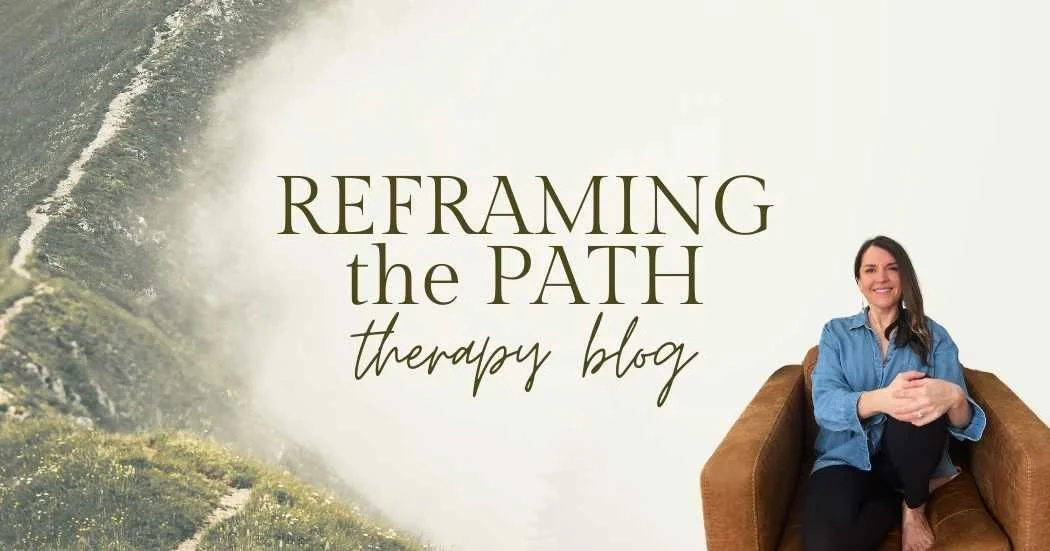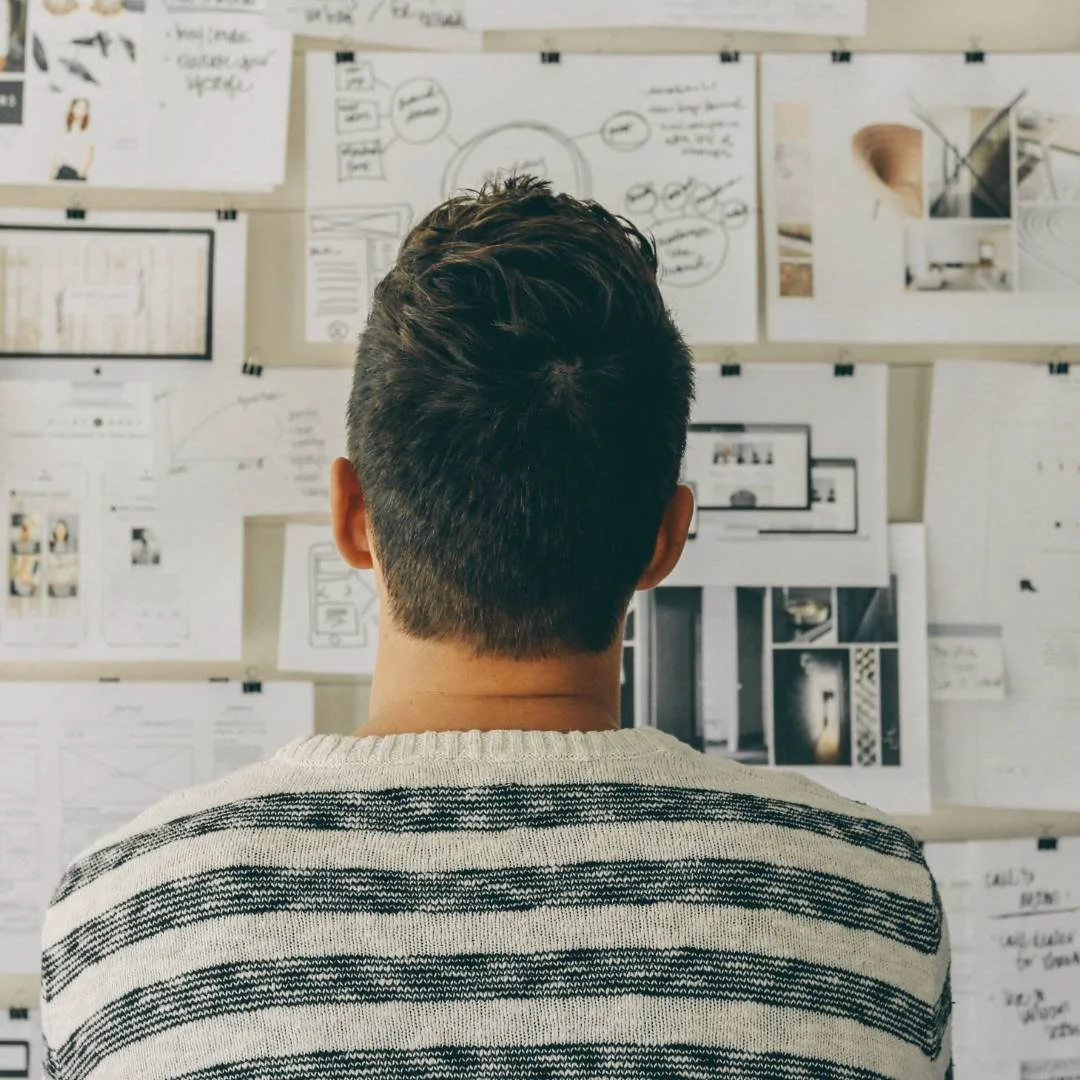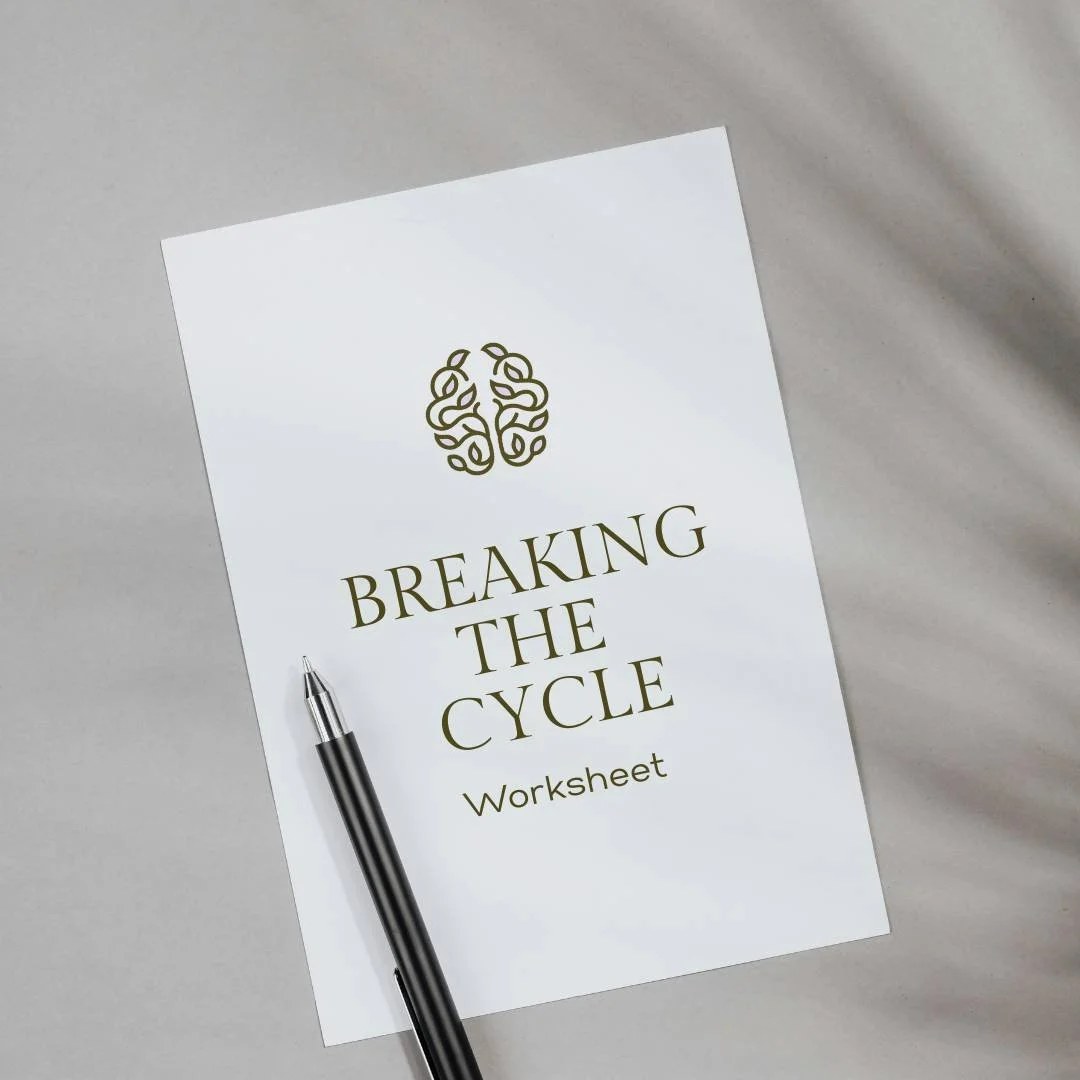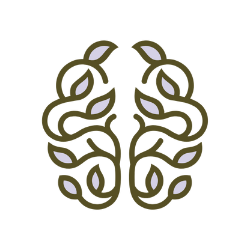Breaking the Cycle: Understanding Our Thoughts, Feelings, and Behaviors
Why It Matters, How to Spot What Isn’t Working, and Creating Better Outcomes
Reframing the Path, by licensed therapist Melissa Rolfes, is your guide to making the most of your therapeutic journey, helping you feel more confident and effective every step of the way. The information provided here is for educational purposes only, and is not a substitute for professional mental health or medical care, nor does it establish a therapist-client relationship. If you're experiencing distress and feel unable to keep yourself safe, please access these resources.
When most people first learn about Cognitive Behavioral Therapy (CBT), it’s often explained as a simple formula: A + B = C. Your thoughts plus your feelings lead to your behaviors. It’s a helpful way to start thinking about how things work, but in my experience, it’s not the full picture.
I see it less as a straight line and more like a dynamic triangle where thoughts, feelings, and behaviors are constantly influencing one another. A thought can spark a feeling that drives a behavior. But a behavior can also shape a feeling that reinforces a thought. Each corner connects back to the others, creating patterns that can either support your wellbeing or keep you stuck.
And just to be clear, CBT isn’t the end-all, be-all of therapy. Like any therapeutic model, it’s one way of understanding things, and it may or may not resonate with everyone. The important part is taking what’s useful and leaving what isn’t.
Understanding this interconnection is one of the most powerful tools you can use in navigating life’s challenges. Once you can see how your inner world and actions feed into each other, you have more choice in how you respond, and more opportunity to create outcomes that actually serve you.
Breaking Down Thoughts, Feelings, and Behaviors
Thoughts
Thoughts are our internal dialogue, the voice of our “self” that comments, judges, questions, and interprets what’s happening around us. Sometimes this voice is supportive, reminding us we’re capable and resilient. Other times it’s harsh or critical, fueling doubt and fear. Whether accurate or not, these thought patterns shape how we feel and the choices we make. For example, you might think, “I can’t handle this,” which quickly colors your emotions and influences what you do.
Feelings
Feelings are your emotional responses: anxiety, anger, sadness, relief, joy. They’re not right or wrong, they’re bodily signals. At their core, emotions are physiological or nervous system responses to a trigger, usually followed by a subjective experience. For example, imagine you receive critical feedback at work. Your initial feeling might be anger or frustration. Your body reacts with tension, a warm face, or a tight chest. Then comes the subjective experience, you think, “This is so unfair,” and feel the urge to defend yourself.
BEHAVIORS
Behaviors are the actions we take (or avoid), that both respond to and shape our thoughts and feelings. They can look like obvious choices, such as reaching for food when we’re hungry, or more subtle patterns, like procrastinating when we feel anxious. At their core, behaviors are the things we do to try to get our needs met.
Maslow’s Hierarchy of Needs: This model describes human needs as a pyramid. At the base are survival needs like food, water, and safety. Further up are needs for belonging, self-esteem, and ultimately self-actualization — the drive to live in alignment with our values and potential. In this framework, all of our behaviors are a way of getting these needs met. Some are straightforward, like locking your door to feel safe, or drinking something when you’re thirsty. Others are less obvious, like overworking to meet a need for approval or avoiding conflict to preserve belonging. Like many psychological models, this one is culture-specific and has limits when it comes to the multicultural inclusion in the research behind it. I think its a good starting place to understanding our behaviors and the cycles we get caught up in, but we have to take what we need and leave the rest.
When we step back and look at our behaviors through this lens, it becomes easier to see both the purpose they serve and whether they’re actually effective in meeting our needs. When a behavior meets the need, it often reduces distress and helps us move forward. But when it doesn’t, the unmet need can create new consequences, fueling more unhelpful thoughts and difficult feelings, and feeding back into the dynamic triangle in ways that keep the cycle going.
Example: Seeing the Pattern
When you put these pieces together, you can see how the triangle works in real life. Imagine this sequence:
Thought: “I can’t handle this project.”
Feeling: Anxiety builds, your chest feels tight, and you notice tension in your body.
Behavior: You procrastinate by scrolling on your phone instead of starting.
In the short term, procrastination relieves the anxiety. But the work still isn’t done, which creates a new wave of stress and reinforces the original thought of “I can’t handle this.” This is how patterns take hold, each part of the triangle feeding into the others.
The good news is that it works the other way too. A shift in one corner of the triangle can change the whole pattern. A new thought, like “I can start with just one small step,” can ease anxiety enough to get you moving. That behavior of taking action builds confidence, which reinforces more balanced thoughts and steadier emotions.
Using Awareness to Create Change
With this cycle, it can be helpful to start at the “end” and work your way backward by noticing what outcomes aren’t serving you. You may already have an acute sense of this to begin with, or else you wouldn’t be reading this blog post.
Maybe you realize you’re stuck in avoidance and its making things worse. Maybe you’re burned out from overworking, and that finish line keeps getting moved. Or perhaps you find yourself getting rejected before a relationship can pan out, regardless of how much you adjust yourself to prevent it. Once you can identify what isn’t working (what you want to change), you can explore your part in it (your behaviors). and trace it back through the triangle.
Ask yourself: What am I doing (or not doing) that’s keeping this outcome in place? From there, consider what need that behavior is trying to meet. Then look at the thoughts and feelings that may be fueling it.
While all three corners of the triangle influence each other, behavior is often the easiest entry point for change. Choosing a different action, which can sometimes be as simple as not responding at all, can start to shift both how you think and how you feel.
Thoughts are also changeable, especially when you slow down and examine them. Start by noticing what your mind is saying. Then ask yourself: Is this thought accurate? Is it helpful? Is there another way of looking at this? You don’t have to swing to unrealistic positive thinking, even a small reframe can make a difference. For example, shifting from “I’ll never get this right” to “This will take practice, and I can improve” creates space for more balanced feelings and choices.
Feelings, on the other hand, are bodily signals that are not always as easy to shift. They can be influenced through practices like grounding, breathing, or movement, but they’re not as easily controlled. This is why starting with behaviors and thoughts often makes change feel more possible.
Example: Shifting the Pattern
Imagine you fear rejection in relationships. The thought might sound like, “No one really wants me around.” That thought creates anxious feelings that show up as withdrawal or defensiveness (behaviors). Over time, those behaviors can push people away, reinforcing the original thought and making rejection feel inevitable. But if you pause and reframe the thought to something more balanced, like “I can’t know for sure what others are thinking, but I can show up as myself,” it opens space for different behaviors, maybe initiating a conversation instead of shutting down. That shift changes the outcome and weakens the self-fulfilling loop.
Mapping Your Own Pattern
I’ve created a worksheet that is designed to help you bring more awareness to your thoughts, feelings, and behaviors. By slowing down and writing things out, you can begin to see the patterns more clearly and identify where change is possible. Remember, the goal isn’t to get rid of thoughts or control feelings. It’s to notice what’s happening and experiment with small shifts that create better outcomes.
Moving Forward
Noticing how your thoughts, feelings, and behaviors influence each other is a powerful step toward change. Patterns may feel automatic, but once you can see them, you have more choice in how to respond. The goal isn’t to control every thought, feeling, or behavior. It’s to recognize what isn’t serving you and practice small, intentional shifts. Even one new perspective, different action, or grounding breath can ripple through the cycle and create outcomes that better meet your needs.
Want more support in creating effective outcomes?
I work with adults across Virginia through online therapy, helping clients explore the connections between their thoughts, feelings, and behaviors and how to break unhelpful cycles. If you’re ready to build new patterns that serve you, let’s connect.







